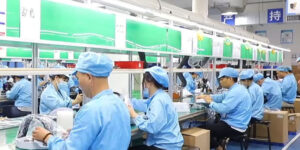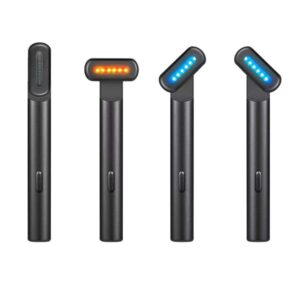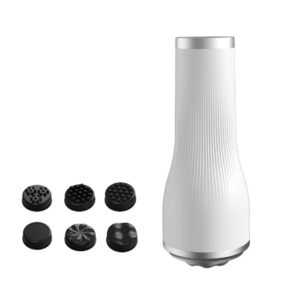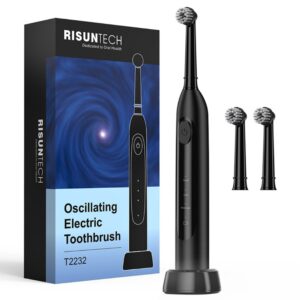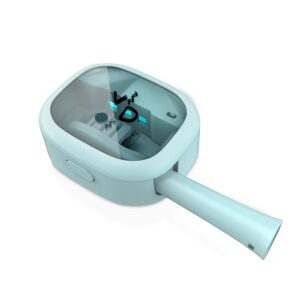Summary
LED light therapy masks are revolutionizing the skincare industry by offering a non-invasive and convenient solution for a variety of skin concerns, including acne, fine lines, and uneven skin tone. Utilizing specific wavelengths of light emitted by light-emitting diodes (LEDs), these masks promote collagen production, reduce inflammation, and enhance overall skin health, making them a popular choice among consumers seeking effective DIY skincare treatments. Their rise in popularity has been fueled by social media trends and the growing market for at-home beauty devices, which is projected to reach significant financial milestones in the coming years.
The efficacy of LED therapy is grounded in the science of photodynamic reactions, where different light wavelengths penetrate the skin at varying depths to target specific issues. Blue light is known for its antibacterial properties, particularly against acne, while red light promotes healing and collagen synthesis, contributing to skin rejuvenation and anti-aging benefits. Near-infrared light aids in deeper tissue repair, making these masks versatile tools in both clinical and home settings.
Despite their advantages, LED light therapy masks are not without controversy. Critics point out the need for more rigorous scientific validation to substantiate some of the claims surrounding their effectiveness and optimal usage protocols. Additionally, the rapid influx of products in the market raises concerns regarding the safety and efficacy of lower-quality devices that may not meet industry standards. Consumers are advised to choose FDA-cleared products and consult professionals for guidance on usage to maximize benefits while minimizing potential risks.
In summary, LED light therapy masks signify a major advancement in skincare technology, combining the benefits of light therapy with user-friendly design, making them accessible to a wider audience. As research continues to evolve, these devices are likely to shape the future of personalized skincare, provided that consumers remain informed about their capabilities and limitations.
Table of Contents
History
The history of light therapy can be traced back to ancient civilizations, with early uses documented in ancient Egypt and India for treating conditions like leucoderma using natural sunlight. In the 1850s, Florence Nightingale’s advocacy for exposure to clean air and sunlight contributed to the foundational development of light therapy for health restoration. A pivotal moment came in 1877 when researchers Downes and Blunt demonstrated sunlight’s ability to inhibit fungal growth, further supporting the efficacy of light therapy in medical treatments.
The modern era of light therapy began in the late 19th century with Danish Nobel Prize winner Niels Finsen, who pioneered the use of light to treat skin tuberculosis, specifically lupus vulgaris. His invention of the Finsen lamp marked a significant advancement in phototherapy, establishing it as a legitimate medical practice. The 1980s saw a surge in the application of light-emitting diode (LED) technology within cosmetology, particularly for acne treatment, due to its effectiveness in promoting collagen production. By the early 2000s, the versatility of LED light therapy expanded, encompassing a range of applications for various skin conditions, chronic diseases, and even the regulation of human circadian rhythms.
Light-emitting diode therapy (LEDT) emerged as a clinical approach utilizing specific wavelengths of light to treat skin conditions, capitalizing on NASA’s innovations in the 1990s that demonstrated the potential of LEDs in clinical practices. The precision of narrow-band LED therapy allowed for targeted treatments, and today, LEDT is widely used in both medical and cosmetic settings to address a variety of skin issues, such as acne, eczema, psoriasis, and signs of photoaging.
In recent years, the market for at-home LED masks has grown dramatically, with consumers increasingly turning to these devices for skincare routines. This rise is partly driven by social media trends and a burgeoning interest in DIY skincare treatments. The global market for LED devices is projected to reach significant financial milestones in the coming years, reflecting their widespread acceptance and integration into personal skincare regimens.
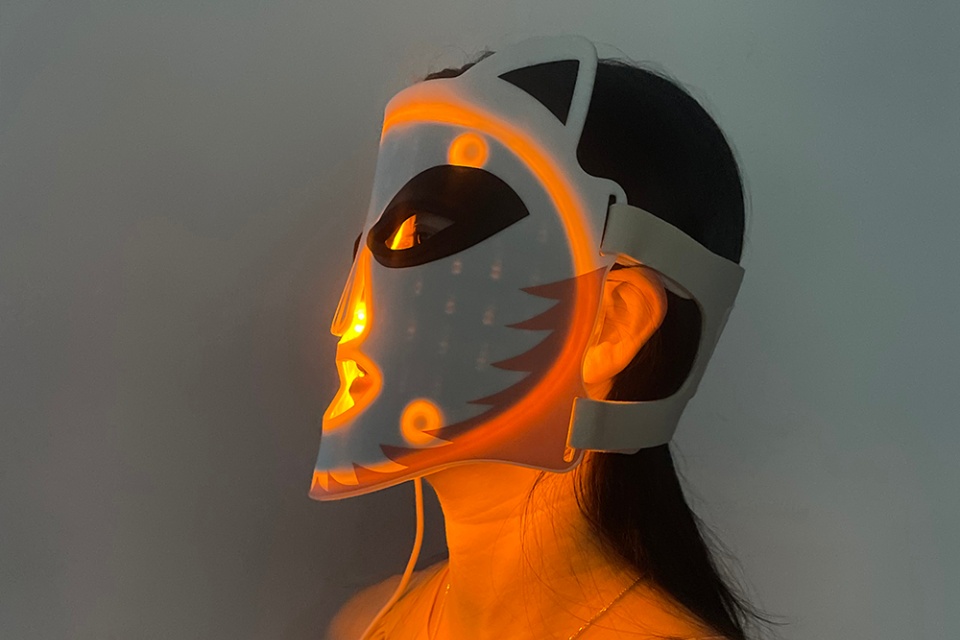
How LED Light Therapy Works
LED light therapy (LEDT) is a non-invasive clinical approach that utilizes various wavelengths of light to treat a range of skin concerns. This method employs light-emitting diodes (LEDs) that emit specific narrow light spectra to target underlying skin issues effectively. The therapy operates on the principle that different wavelengths penetrate the skin at varying depths, allowing for tailored treatments depending on the desired outcome.
Mechanism of Action
The effectiveness of LEDT is rooted in its ability to activate various cellular processes through photodynamic reactions. These reactions involve three main components: photosensitizers (PS), light of specific wavelengths, and the presence of oxygen within the cells. Upon exposure to the light, the photosensitizers absorb energy and subsequently initiate therapeutic processes by generating reactive oxygen species (ROS) that induce oxidative stress and lead to cellular damage in targeted areas. This process can either promote cell death via apoptosis or necrosis, depending on the type of light and cellular environment involved.
Wavelength-Specific Effects
Different wavelengths of light produce distinct effects on the skin:
- Blue Light (415nm): Known for its antibacterial properties, blue light is particularly effective against inflammatory acne. It helps to control breakouts by targeting the bacteria responsible for acne development, though evidence for its effectiveness against blackheads and whiteheads is limited.
- Red Light (633nm): This wavelength promotes healing and collagen synthesis, making it beneficial for skin rejuvenation. Red light stimulates fibroblast activity and enhances mitochondrial function, which can accelerate the wound healing process and improve skin texture and tone.
- Near-Infrared (NIR): While not always included in every LED mask, NIR light penetrates deeper into the skin, aiding in tissue repair and regeneration. Its combination with red light is often cited as the most effective for promoting skin health and elasticity.
- Yellow Light (585-590nm): Although its benefits are less substantiated, yellow light is claimed to target surface vascular conditions and may help in reducing pigmentation by affecting melanin production in the epidermis.
Treatment Protocols and Considerations
To achieve optimal results with LEDT, it is crucial to adhere to evidence-based treatment protocols. Typical recommendations include multiple sessions per week for a set duration, such as 10-minute treatments three to four times weekly. It is also essential to consider the power density (irradiance) of the light used; sufficient power density is necessary for effective penetration and treatment of skin concerns. Wavelengths that are too broad or not evidence-based may lead to suboptimal results and should be avoided.
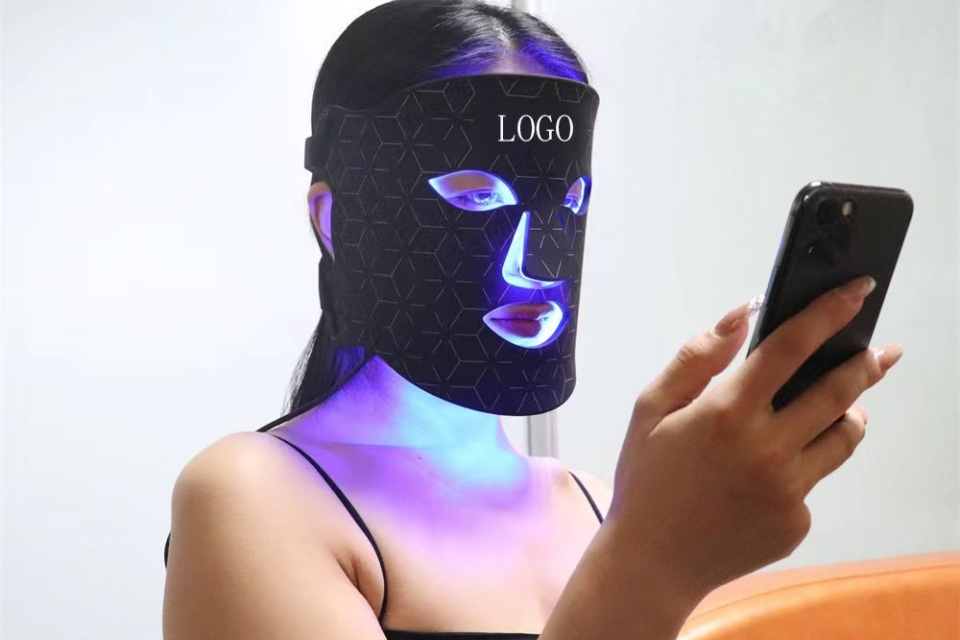
Benefits of LED Light Therapy Masks
LED light therapy masks offer a range of benefits for skincare, targeting various skin concerns and conditions. This non-invasive treatment utilizes specific wavelengths of light to address issues such as fine lines, acne, and uneven skin tone.
Acne Treatment
LED therapy is especially effective in treating acne, with blue light targeting the bacteria responsible for breakouts and reducing oil production. When combined with red light, this therapy not only addresses acne at its source but also calms inflammation, promoting faster healing. Many dermatologists recommend LED therapy for individuals who experience persistent acne but may be sensitive to harsher topical treatments.
Skin Rejuvenation
One of the primary benefits of LED light therapy is its ability to promote skin rejuvenation. Red light, in particular, is known to stimulate collagen production, reduce inflammation, and improve overall skin texture. Studies have indicated that red light therapy can help diminish age spots, sun damage, and hyperpigmentation, leading to a more youthful appearance. Regular use of LED masks has been associated with increased blood circulation and enhanced cell turnover, resulting in brighter, more even-toned skin.
Anti-Aging Benefits
LED light therapy masks can significantly improve the signs of aging. The application of red and near-infrared light has been shown to reduce the appearance of wrinkles, enhance skin elasticity, and increase hydration levels. By fostering collagen synthesis and supporting cellular repair mechanisms, these masks can effectively combat the visible effects of aging.
Safety and Accessibility
LED masks are generally considered safe for most individuals when used appropriately. They are available in both clinical settings and as over-the-counter home devices, allowing users to incorporate this advanced skincare technology into their routines conveniently. However, it is recommended to choose devices that are FDA-cleared to ensure safety and efficacy.
Considerations
While LED light therapy masks offer numerous benefits, it is essential to complement their use with a proper skincare regimen for optimal results. Additionally, individuals should consult with a healthcare professional, especially those with specific skin conditions such as eczema, to determine the best approach to using LED therapy safely.
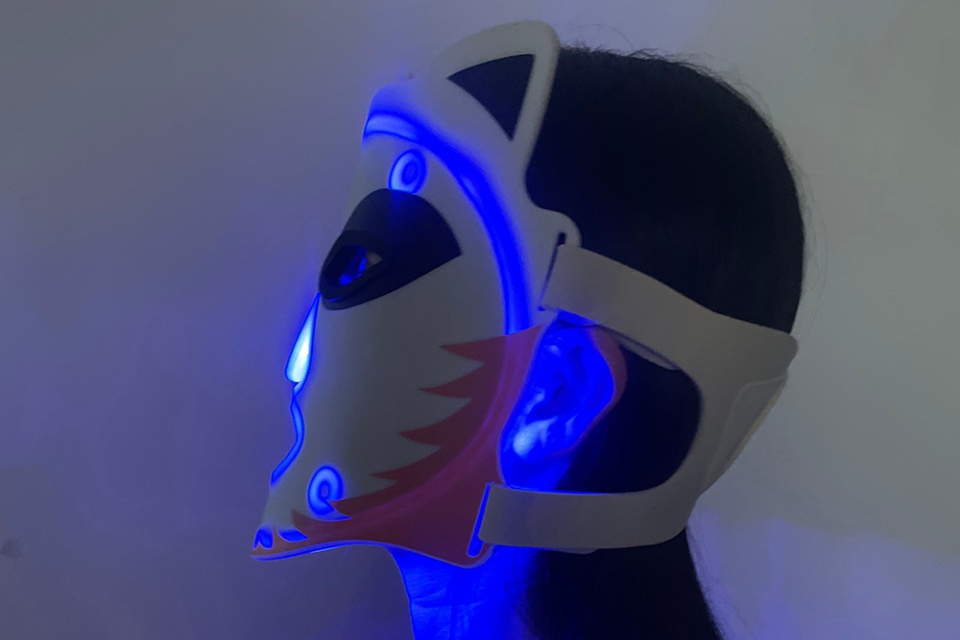
Usage and Application
LED light therapy masks have gained popularity as a non-invasive skincare treatment, offering users the ability to enhance their skincare routine with minimal effort. Typically, these devices are designed for ease of use, allowing users to simply place the mask over their face or hover a handheld device over specific areas. Sessions usually last between three to ten minutes, and users are encouraged to complete the full duration unless discomfort arises.
Treatment Frequency
To achieve optimal results, consistency is key. Many users recommend treatments three to five times a week, depending on the specific device and its irradiance levels. For instance, the Lumara Illuminate Red LED Panel suggests a treatment time of five minutes, five times a week, while the GembaRed OverClocked Body-Light LED Panel recommends a treatment time of ten minutes, three to four times a week.
Incorporating into Skincare Routines
Incorporating LED therapy into existing skincare routines is straightforward. Users are advised to cleanse and dry their faces before using the mask, applying any subsequent skincare products, such as serums and moisturizers, post-treatment. This allows for better absorption of active ingredients while enhancing the overall efficacy of the LED therapy. It is important to note, however, that while red-light therapy can be combined with retinoids, it is advised to avoid using them simultaneously to reduce the risk of skin irritation.
Considerations for Use
When considering LED light therapy, individuals should be mindful of their specific skin conditions and the capabilities of the device they choose. For example, while many masks include multiple wavelengths, such as the 630nm and 660nm used for red light therapy, some may lack near-infrared (NIR) options, which can limit their therapeutic benefits. Users should also evaluate the convenience of the device, including storage, treatment duration, and whether it requires a power source.
Comparison to Other Skincare Treatments
LED light therapy masks represent a revolutionary approach to skincare, offering distinct advantages over traditional treatments. Unlike many high-maintenance skincare regimens that require downtime or can be cumbersome to integrate into daily routines, LED masks provide a quick, enjoyable, and effective solution for various skin concerns, including acne, wrinkles, and skin healing.
Non-Invasiveness and Safety
One of the primary benefits of LED light therapy is its non-invasive nature. Unlike surgical procedures or harsh chemical treatments, LED masks utilize low levels of heat and emit light wavelengths that are safe for the skin, minimizing risks of adverse effects such as redness or irritation typically associated with more invasive procedures. This makes LED therapy a suitable option for a broader audience, including those with sensitive skin who may not tolerate other treatments well.
Versatility of Treatment
LED masks are versatile in addressing a wide range of skin issues. For instance, red light therapy is particularly effective for anti-aging, inflammation, and skin healing, while blue light therapy is favored for acne treatment, oil control, and bacterial reduction. This multifunctionality allows users to target multiple skin concerns without the need for a complicated routine, making LED masks a holistic addition to any skincare regimen.
Ease of Use
Incorporating LED masks into a skincare routine is straightforward. Users can wear these masks while engaging in other activities, such as watching TV, making the treatment easy to adopt and maintain as part of a nightly ritual. The flexibility of the materials used in many masks also enhances comfort, allowing users to relax without the need for strict adherence to positioning during the treatment session.
Comparison to Other At-Home Devices
While there are various at-home skincare devices available, such as microdermabrasion tools or chemical peel kits, LED masks offer a unique balance of effectiveness and ease. Many other devices may require a steeper learning curve or necessitate careful handling to avoid skin damage, whereas LED masks provide a gentler approach that is user-friendly and does not typically require expert guidance for safe use.
Research and Studies
The field of LED light therapy, particularly in skincare, has garnered significant attention in recent years, with a variety of studies investigating its efficacy for various skin conditions and aesthetic improvements. Research suggests that certain wavelengths of light, particularly red and near-infrared (NIR), can have therapeutic effects on the skin.
Historical Context
The roots of light therapy can be traced back to early advancements in phototherapy. Pioneering work by Niels Ryberg Finsen, who won the Nobel Prize in Medicine in 1903, established the groundwork for the use of light in treating dermatological conditions. Over the years, the field has evolved, with current applications ranging from wound healing to cosmetic rejuvenation.
Efficacy of Light Therapy
Recent studies have provided evidence supporting the use of red light therapy (RLT) in reducing fine lines and improving overall skin texture. For instance, a randomized prospective double-blind placebo-controlled study indicated that treatment with a wavelength of 1072 nm significantly improved the appearance of wrinkles and under-eye bags, with 52% of participants reporting improvements in complexion compared to 20% in the control group. Additionally, some researchers have highlighted the potential for RLT to accelerate wound healing, further demonstrating its versatility beyond cosmetic applications.
Current Limitations and Ongoing Research
Despite the promising findings, many experts caution that the efficacy of RLT for its various claimed uses is still under investigation. While some studies have shown potential benefits, there is a consensus that further research is necessary to establish robust evidence across different applications. Most published studies to date have been limited by small sample sizes, lack of placebo control, or reliance on animal models, which may not fully translate to human outcomes.
Moreover, the optimal parameters for treatment, such as ideal wavelengths and irradiance levels, are still being debated. While some researchers advocate for wavelengths between 810-840 nm as optimal for skin absorption, consensus has yet to be reached on the best practices for usage duration and frequency.
Safety and Considerations
Red light therapy is generally considered safe, with minimal side effects reported when used as directed. It is non-invasive and avoids the harmful effects associated with ultraviolet (UV) light exposure, which can lead to skin damage and increased cancer risk. However, misuse or overuse of RLT devices can pose risks, including skin or eye damage. Thus, while red light therapy presents an exciting avenue in skincare, consumers are advised to follow manufacturer guidelines closely and remain informed about ongoing research findings.

Popular Brands and Products
LED light therapy masks have gained significant popularity in the skincare market, with various brands offering innovative products designed to address a range of skin concerns. The efficacy and features of these masks can vary widely, making it essential for consumers to choose wisely.
Leading Brands
Several brands stand out in the LED mask market, known for their quality and effective results. For instance, Currentbody Skin’s LED Light Therapy Mask is praised for its dual functionality, providing treatment for both the face and neck with a detachable neck piece. Despite its high price point of over $500, it has garnered positive feedback for its comfort and results in reducing wrinkles and fine lines.
HigherDose offers a Red Light Face Mask that targets hyperpigmentation, showcasing the brand’s focus on specific skin issues. This mask has been tested rigorously and is recommended for its efficacy in treating various skin conditions.
Notable Products
- Best for: Face and neck treatment
- Included LED bulbs: 100 red and 62 blue LED lights
- User feedback: Highly rated for its lightweight design and effectiveness, with users reporting remarkable improvements in their skin.
- Unique Features: Offers vibrations for added relaxation and comes with protective eye shields for comfort during use.
- Skin Types: Suitable for all skin types; the device allows for varying treatment times of 3 or 9 minutes.
- Focus: Specifically designed for addressing hyperpigmentation while using FDA-cleared technology. This mask is noted for its thorough testing process, ensuring high standards of efficacy and safety.
Consumer Considerations
Experts emphasize the importance of purchasing from reputable companies that stand behind their products. Dermatologists recommend avoiding low-cost options from platforms like Amazon, which may not offer the same level of quality and support. When choosing an LED mask, potential buyers should consider factors such as the types of light used, comfort, treatment time, and the reputation of the brand within the industry.


